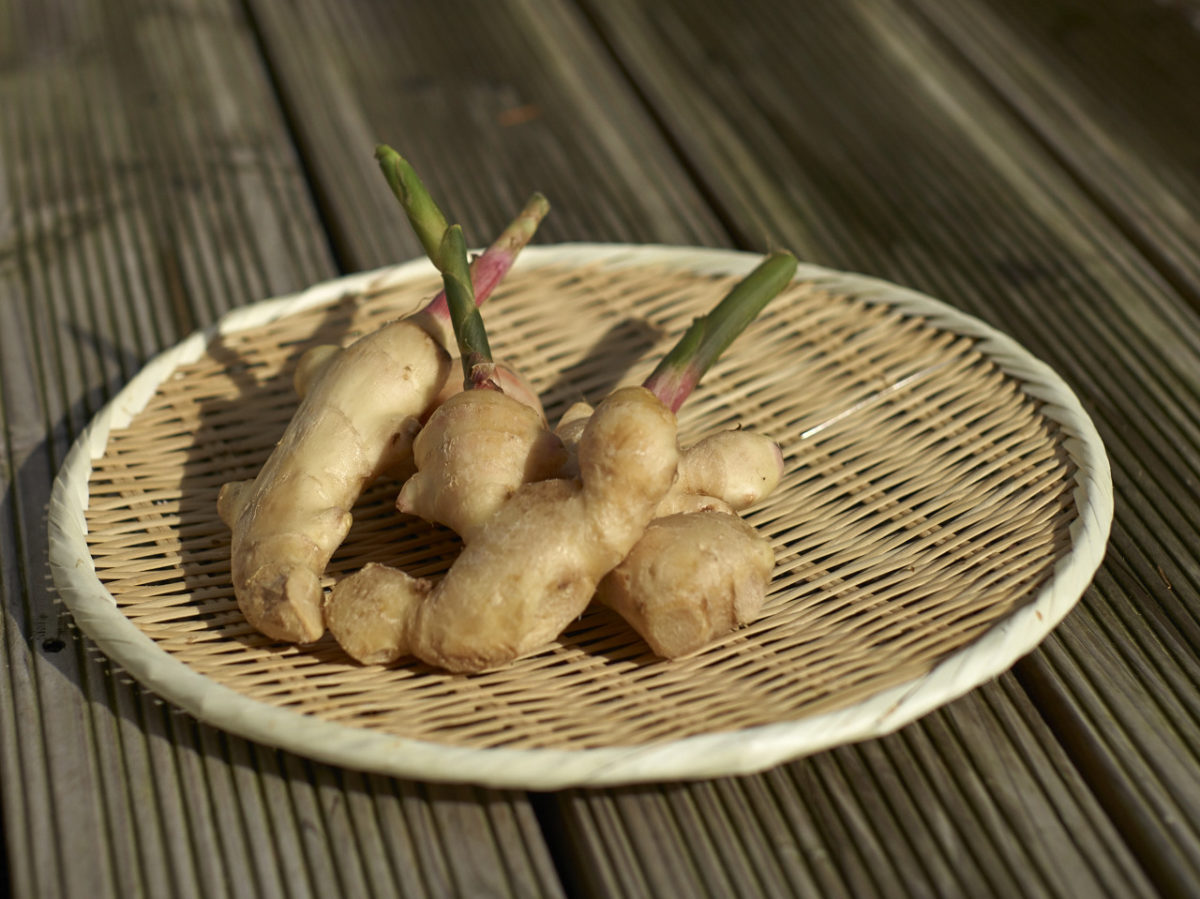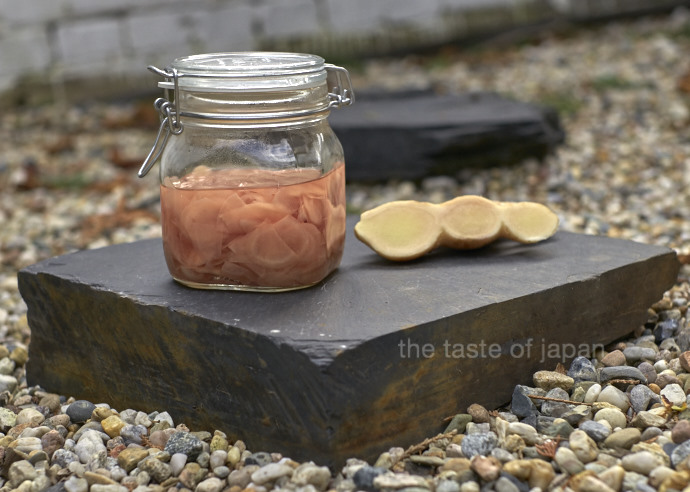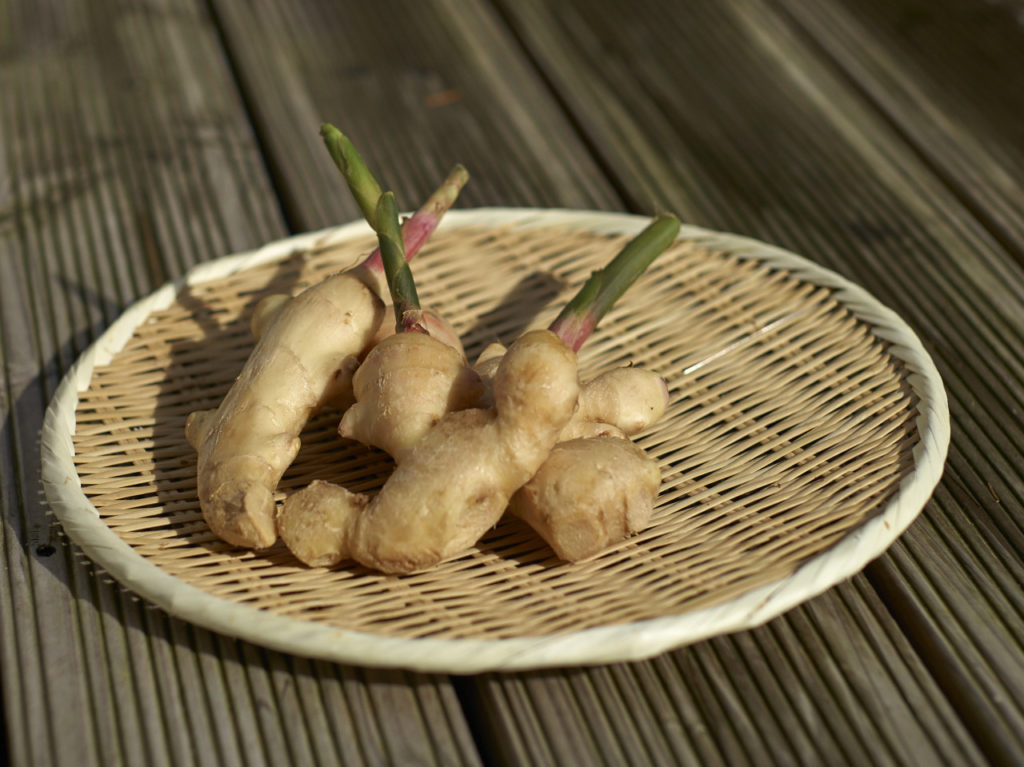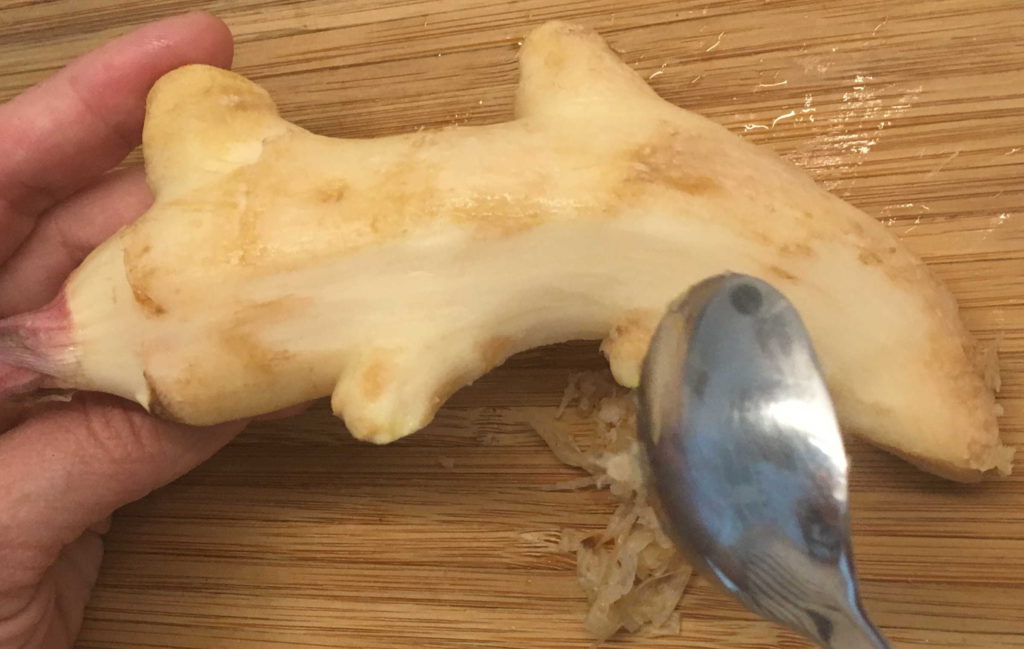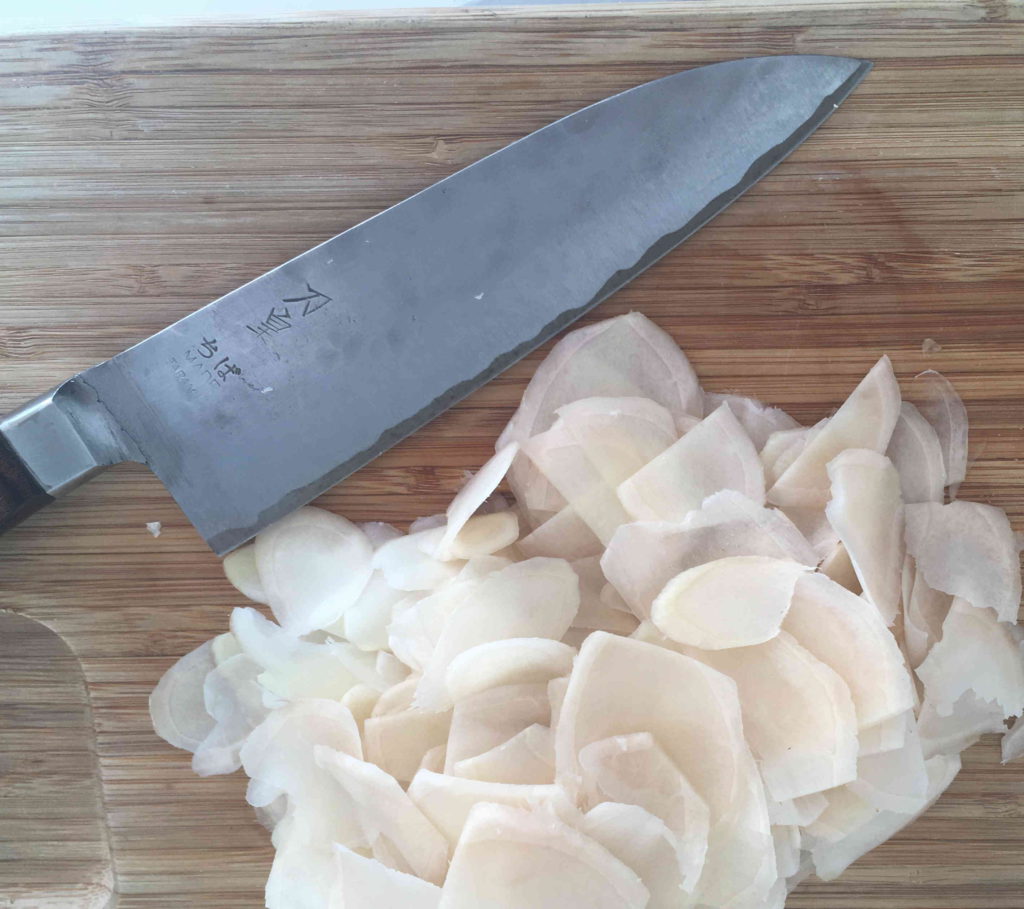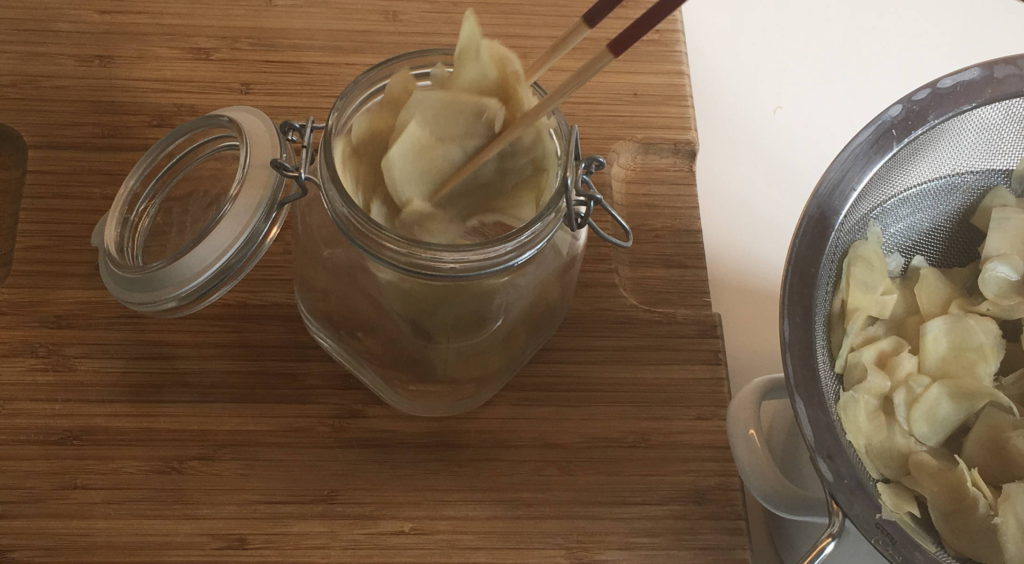Oh, I do not like January. I never did. Somehow I adore the cozy cold days until New Years, but right afterwards I get all excited on those rare moments of warm January-sunrays that foster the seeds of spring feeling and make me go out to buy tulips for our home. Often though by the time I get home though the world around me is again cloudy and cold. But anyway – I still have a small glimpse of spring for you today. A restless little piece of ginger reminded me that it is a good time to start to grow your own – at least when you live in a colder climate. Young ginger has many wonderful uses and here you find how to make your own pickled ginger. Ginger is absolutely easy to grow at home, so in order to get a good crop this fall start now and you are all set.
How to Grow Ginger at Home
To grow ginger yourself all you need is a bit of patience and space for the plants later on.
Take some oft the ginger you can buy at the supermarket. You see some kind of ‚eyes’ on the root. Cut them off and put them in a bowl with a tiny bit of water. You only need the bottom to be covered slightly (too much water causes the ginger to mold). Cover the bowl loosely (not airtight) with clear plastic, put it on a windowsill and wait. About every two days check the water level and adjust if necessary.

After a couple of days you can see the color oft he eyes turning brighter. Some even change to light green. After one or two weeks you can see air roots developing from the little ginger tranche that will keep on growing towards the water on the bottom. The stem usually start to develop in week three to four. I keep them in the bowl until the stem is about 4-6 cm. After that I would plant it in soil, but still keep it inside (given our local temperatures in early spring) until it gets warm enough. To grow ginger in Europe it takes a good eight to ten months to develop nice young roots big enough to be consumed. So this is usually in late fall when the leaves turn color. You can eat the roots right away or dry them to get more mature ginger like you would in the supermarket.

I know that I have not been posting a lot lately, but if you still don#t want to miss out on news, subscribe to the newletter.
